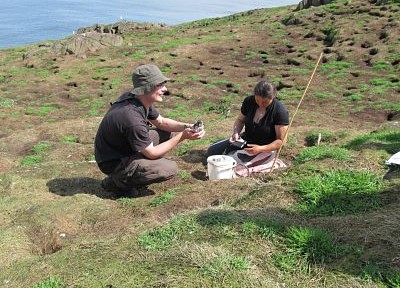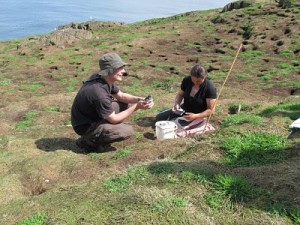
Hi, I’m Niall, the new Urban Biodiversity Natural Talent Apprentice. Over the next 12 months I will be focusing on Urban Biodiversity, particularly brownfield sites. I will be working closely with Buglife in Stirling, learning from Suzie Bairner, Craig MacAdam and anyone else I can persuade to share their knowledge with me!
I am fascinated with the diversity of life, especially bugs. My recent seasonal job at St Cyrus National Nature helped to introduce me to some of these groups of bugs and the people who enthusiastically record them. Having done some general work in conservation I am now really looking forward to dedicating myself to learning about urban ecology. I will have the opportunity to learn how to survey urban areas and identify invertebrates. This will hopefully help to protect some of the most special patches of habitat, which can act like stepping stones to allow invertebrates to distribute.
We may think of urban areas as being a uniform grey, concrete human environment, with no space for other living things. Actually this is far from the truth. In Scotland almost 80% of urban land is actually open green space or un-built on. So really there is plenty of space to share with biodiversity. Even buildings and rubble in disused sites can provide a home for life because these materials heat up quickly and are useful for cold blooded creatures. Our gardens are actually very rich and varied habitats. A lady called Jennifer Own identified 2 673 different species in her garden in Lincolnshire over 30 years! Most of these were insects and other invertebrates. Imagine what could be waiting to be found in your garden or park!
I am looking forward to discovering the overlooked creatures in some familiar settings around where we live. I will be working in some under-rated spots for wildlife – brownfield sites, which are areas that have had a previous land use and are now derelict or abandoned. The natural world doesn’t waste much time in reclaiming these places and some brown field sites can provide homes to a huge variety of different plants and animals including some rare ones. What might come as a surprise is the fact that brownfield land can have many more different types of plants and animals than some of the greener parts of the countryside. Farming has become very intensive and in many areas invertebrates are struggling to survive in this changing world. Our towns, cities and ex-industrial sites can actually provide a sanctuary for struggling species, like an island in a hostile sea. Brownfield sites are often prioritised for development before we even know what is living or growing there, so it is important to assess their potential. That way decisions about which areas should be developed and which should be protected can be based on facts.
What I’m really excited about is learning to identify some of these species and discovering their life cycles. Hopefully I will also get a chance to introduce some of these fascinating creatures to others too. Now more people globally live in towns and cities than in the countryside and urban biodiversity gives people a chance to connect with nature right on their doorstep (sometimes literally). Nature is not just something you have to switch on the TV to see, its all around us. All we need to do is step outside our houses.
Urban areas actually include an incredible variety of different types of land use and habitats, all with their own special creatures. So there will be no shortage of potential for my new apprenticeship, which I will be planning over the next few weeks.
More about my apprenticeship soon.
Bye for now,
Niall

